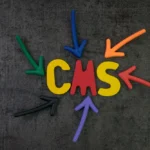Key Differences Between POC vs Prototype vs MVP
A short, practical guide to what each term means, the question each answers, and the role in product development. This section frames distinct goals, expected outputs, and stakeholder value for founders, engineering leads, and product managers.
What is a Proof of Concept and Why is it Important?
A Proof of Concept (POC) proves technical feasibility or regulatory fit for a tricky idea. POC work focuses on a single risk or unknown: an algorithm, a data pipeline, a compliance constraint. Deliverable: a focused experiment with clear success criteria. Benefit: early technical clarity and lower technical risk for future investment.
Defining a Prototype: Purpose, Functionality and Value
Prototype expresses look, feel, and basic flow. It may be a clickable UI mock, a coded demo without backend logic, or a role-played service flow. The aim: gather early feedback on interaction, visual hierarchy, and core flows. Benefit: faster stakeholder alignment and clearer product vision.
What Does Minimum Viable Product Mean for Startups?
A Minimum Viable Product (MVP) ships a core feature set to real customers for learning and traction. An MVP contains working end-to-end functionality, basic analytics, and a feedback channel.
When to Use Proof of Concept, Prototype and MVP in the Product Lifecycle
Short primer on timing. Each approach maps to different stages and different investment levels. Use this section as a quick decision guide for planning next steps.
Identifying the Right Stage for POC
Use a POC when a single technical or regulatory risk blocks progress. Typical triggers:
Best Timing to Build a Prototype for App Development
Build a prototype when the offering needs visual validation or stakeholder buy-in. Typical triggers:
Launching an MVP for Real Market Feedback
Launch an MVP after core risks are resolved. Typical triggers:
What Are the Unique Benefits and Drawbacks of Each Approach
Direct comparison of strengths and limitations. This roadmap helps assign resources and expectations.
Pros and Cons of Proof of Concept in Mobile Apps
| Pros | Cons |
|---|---|
| Clarifies technical feasibility quickly. | Not suitable for market validation. |
| Prevents wasted build effort. | Often internal only; not persuasive for customers. |
| Low cost compared with full builds. | Narrow scope may miss UX risks. |
Prototype Strengths, Weaknesses and Limitations
| Strengths | Weaknesses |
|---|---|
| Fast feedback on interaction and visuals. | May lack real performance data. |
| Great for stakeholder alignment. | Can mislead stakeholders about true readiness. |
| Useful for early usability tests. | Needs careful expectations to avoid scope creep. |
MVP Advantages for Startup Growth and Validation
| Advantages | Limitations |
|---|---|
| Direct market signals: retention, conversion, churn. | Higher cost and technical debt risk. |
| Early revenue and investor traction. | Requires baseline operational support. |
| Real feedback guides prioritization. | Poorly scoped MVPs waste resources. |
How to Decide Which Approach Fits Project Goals and Resources
A practical decision matrix for founders and technical leads. The aim: match risk, budget, and timeline to the right validation step.
Factors to Consider in Choosing POC, Prototype or MVP
Key considerations
Decision checklist
Budget, Timeline and Team Expertise Impacts
Resource mapping
Team fit suggestions
How User Feedback Shapes the Development Path
Feedback loop for data-driven progression:
Actionable step: treat each stage as an experiment with measurable outcomes and exit criteria.
Common Mistakes to Avoid With POC, Prototype and MVP
A short list of traps that waste time and money. Each entry includes a corrective action.
Overinvesting in Early Stages
Mistake: high-fidelity builds too early.
Correction: set strict scope limits and a short timeline. Keep experiments focused on one hypothesis.
Ignoring User Insights and Market Signals
Mistake: launching features without real feedback.
Correction: instrument tests and gather qualitative interviews within weeks of release.
Checklist to avoid common errors
What Makes Proof of Concept, Prototype and MVP Critical for Mobile App Success
Short explanation of why each stage acts as a risk-mitigation layer. Emphasis on cumulative learning and investor confidence.
These stages form a low-cost validation ladder that reduces the chance of late-stage pivots.
Do I Need a Prototype Before Building an MVP?
Short answer: not always. When core technology and market fit are clear, skipping a prototype can save time. When flows or visuals matter for adoption, a prototype forms a low-risk validation step. Use a prototype when UI or onboarding will determine early retention.
How Mobile App Developers, CTOs, and Enterprises Leverage POC, Prototype and MVP
Short guide to practical usage by role.
Example (founder-focused):
A health-tech founder targeted a regulatory-heavy feature. A one-week POC proved data handling met privacy rules. A prototype then clarified patient flows for clinicians. An MVP followed with monitoring and billing. Result: faster procurement from hospitals and earlier revenue.
Frameworks and Tools
| Stage | Goal | Deliverable | Typical time |
|---|---|---|---|
| POC | Technical feasibility | Focused demo or test | Days–weeks |
| Prototype | Interaction validation | Clickable mock or demo | 1–6 weeks |
| MVP | Market validation | Working product with metrics | 1–6 months |
Experiment-driven roadmap (framework)
Best Practices Checklist (Actionable)
Expert tip: Retrospect after each stage; capture learnings in a single decision memo to guide stakeholders.
Expert tip: Retrospect after each stage; capture learnings in a single decision memo to guide stakeholders.
Real-World Founder Example
A fintech founder had a plan for instant invoice financing. Main unknowns: bank API reliability and borrower acceptance. Steps taken:
Outcome: staged learning reduced burn and increased investor confidence.
Key Takeaways
Conclusion
A staged validation strategy reduces risk and speeds decision-making. Small experiments produce high-value learning. Apply the right approach for the primary risk: technical unknowns use POC; design doubts use prototypes; market questions use MVPs. Keep scope tight, measure outcomes, and let evidence guide next steps.
Frequently Asked Questions About POC, Prototype and MVP
What is the main difference between a POC and a prototype?
The main difference is that POC is used to check specific idea or technology feasibility, focusing on technical validation, whereas a prototype demonstrates what the final product might look or feel like, presenting design and user experience for stakeholder feedback
When should I choose a PoC over a prototype?
Choose PoC over prototype when the primary uncertainty in your project is technical feasibility. It means you are trying to confirm if a particular concept, approach, or technology can actually be implemented successfully.
How do you measure success for a PoC?
Success for Proof of Concept (PoC) is measured by how well it meets predefined requirements, clear objectives and success criteria that demonstrate the feasibility and value of the concept.
What is typical time and cost ranges for software PoC?
Typical time frame for developing Proof of Concept (PoC) with team Epistic ranges from about 2 to 5 weeks. Timeline depends on scope, complexity and specific project requirements.
Cost can vary based on the scope, technology and development country. Team Epistic can help you build POC with the minimum budget of $5000.
What is Estimated time and cost to develop a prototype?
The estimated time to develop a software prototype typically ranges from 1 to 8 weeks, depending on the complexity and fidelity of the prototype.
Cost to develop a prototype varies widely based on complexity, interactivity, and development approach.
How to test and validate prototype with users?
Testing of prototypes involves observing how real users interact with a model of your product using various testing methods, gathering qualitative and quantitative data, and iteratively improving the design based on actionable feedback.






